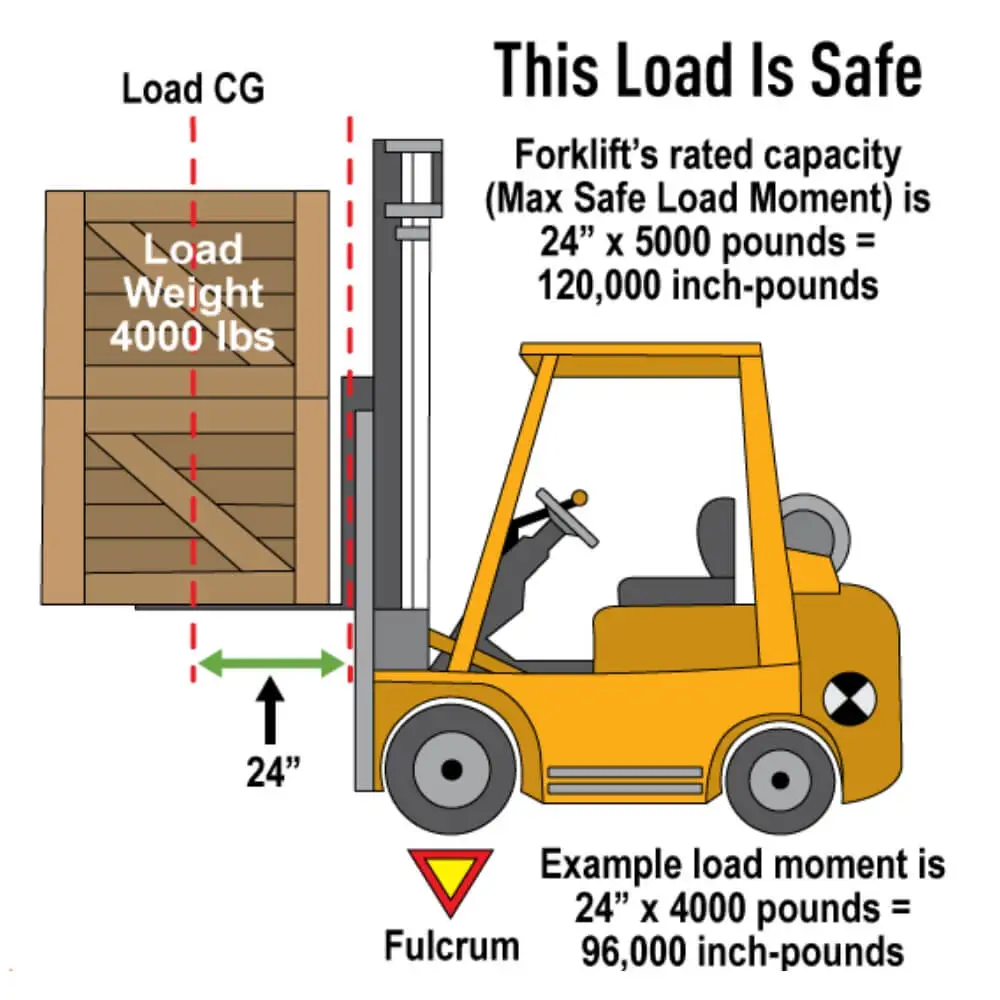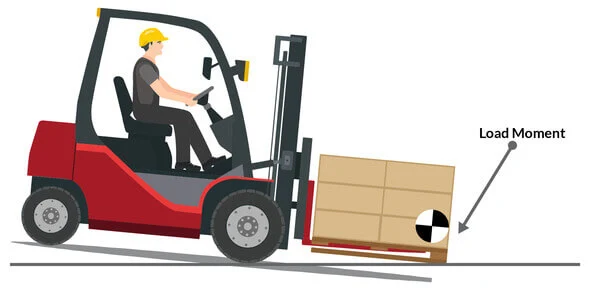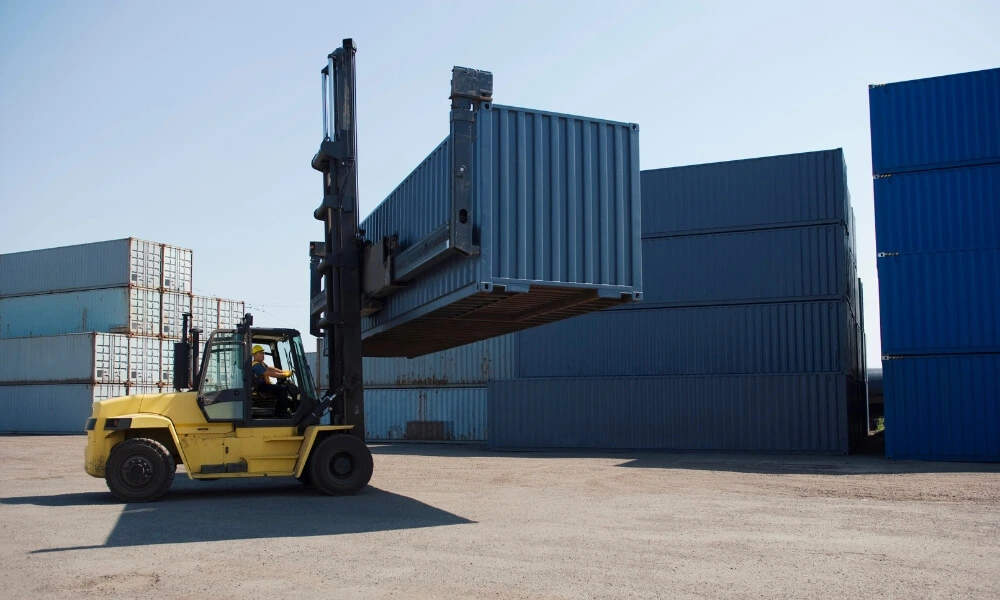In the fast-paced world of logistics and warehousing, forklifts are indispensable tools that streamline the handling and transportation of materials. While forklifts can significantly improve efficiency, operating them requires careful attention to safety, especially when handling heavy or irregular loads. One of the crucial aspects that operators must understand to ensure safe operation is the concept of forklift moment and load moment.
In this blog post, we will delve into the mechanics of these two fundamental elements. We will demystify what each term means, the mathematics involved, and, most importantly, how these moments impact the stability and safety of forklift operations. Whether you’re a seasoned forklift operator, a warehouse manager, or new to the logistics industry, this information is vital in minimizing risks and ensuring smooth operations. So, fasten your seat belts as we take you through a crash course in forklift dynamics and safety!
Forklift Moment
A moment is calculated in inch pounds. It equals the distance (in inches) x weight (in pounds) from a fulcrum to each end of the beam. Two necessary moment calculations determine the stability of the forklift load.
The forklift moment is the distance from the fulcrum at the centre of the front wheel to the centre of gravity (CG) of the unloaded forklift multiplied by (x) the capacity rating of the forklift.
Forklift moment = distance from the fulcrum to CG x capacity of the forklift.
The forklift moment is the force needed to move the forklift when carrying a load. It considers the weight of the lift, its height, and the distance between it and the ground. The formula for this calculation is more complicated than that for load moments, but just as important to ensure that the lift is safe.
Load Moment
The load moment is the distance from the fulcrum to the forklift CG of the load multiplied by (x) the weight of the load in pounds.
Load moment = distance from the fulcrum to load CG x forklift capacity.The load moment is the amount of force needed to lift an object. This can be determined by taking into account the weight of the load, its centre of gravity, and the distance between the load and the forklift mast. To calculate this moment, use a mathematical formula involving these factors. Getting this number accurate is essential so the load can be lifted safely.
When using a forklift to move loads, it’s essential to always ensure that the load and forklift moments are calculated correctly. If either of these moments is inaccurate, there can be an increased risk of injury or damage to the load or other objects nearby. Proper safety equipment is essential, and always following the manufacturer’s instructions when operating a forklift.
Finally, it is essential to remember that even if the load and forklift moments are calculated correctly, there can still be an increased risk of injury or damage if proper safety measures are not taken. Always wear gloves to protect your hands from sharp corners and edges on loads, and ensure the forklift is in good working order and adequately maintained.
Understanding the importance of load and forklift moments can help ensure your lifts are safe for everyone involved. Correctly calculating these moments can save time and money and reduce the risk of injury or damage to loads or other objects nearby. The proper knowledge and safety precautions make lifting loads safe and efficient.

Capacity Plates
Forklifts have a capacity plate to tell the user what loads are safe to lift. If the plate says the capacity is 30,000 pounds or less, then that capacity is rated for a load with a centre of gravity 24” from the face of the forks. Most pallets are 48” x 48” and have a 24” CG if the weight of the load is evenly distributed. If the forklift capacity is more significant than 30,000 pounds, the label will rate the load at a 36” or 48” centre of gravity since larger forklifts usually lift physically larger loads.
Examples
Let’s look at an example that illustrates what we’ve been discussing. An evenly distributed 48″ wide load on the forks has a centre of gravity that is 24” from the face of the forks.
Safe Lift
If the load weighs 4,000 pounds, the load moment will be (24″ x 4,000 lb.) = 96,000 inch- pounds. Using the example and capacity plate in the previous section, a forklift rated at 5,000 pounds at 24 inches would safely lift a load with a moment of up to (24″ X 5,000 lb.) = 120,000 inch- pounds. In this case, the load above would be safe to lift.
- Forklift Moment = (24″ X 5,000 LBS) = 120,000 inch-pounds
- Load Moment= (24″ X 4,000 LBS) = 96,000 inch-pounds
The load is safe to lift because the load moment is less than the forklift.
Unsafe Lift
Let’s say the same 4,000-pound load was 66″ wide, the load moment would then be 132,000 inch-pounds (33” X 4,000 lb.). Would the load be safe?
- Forklift Moment = (24″ X 5,000 LBS) = 120,000 inch-pounds
- Load Moment= (33″ X 4,000 LBS) = 132,000 inch-pounds
In this example, the load moment is greater than the forklift moment, so the load is too heavy for the forklift and would tip forward.
Conclusion
In conclusion, understanding forklift and load moments is paramount in ensuring forklifts’ safe and efficient operation. By comprehending the mechanics involved and carefully calculating these moments, operators can prevent accidents and damages, ensuring not only the safety of the load but also the well-being of all personnel involved. It is vital to always abide by the manufacturer’s guidelines, keep the forklift well-maintained, and adhere to safety practices. Being well-informed and cautious can make a difference in the demanding environment where forklifts operate.

